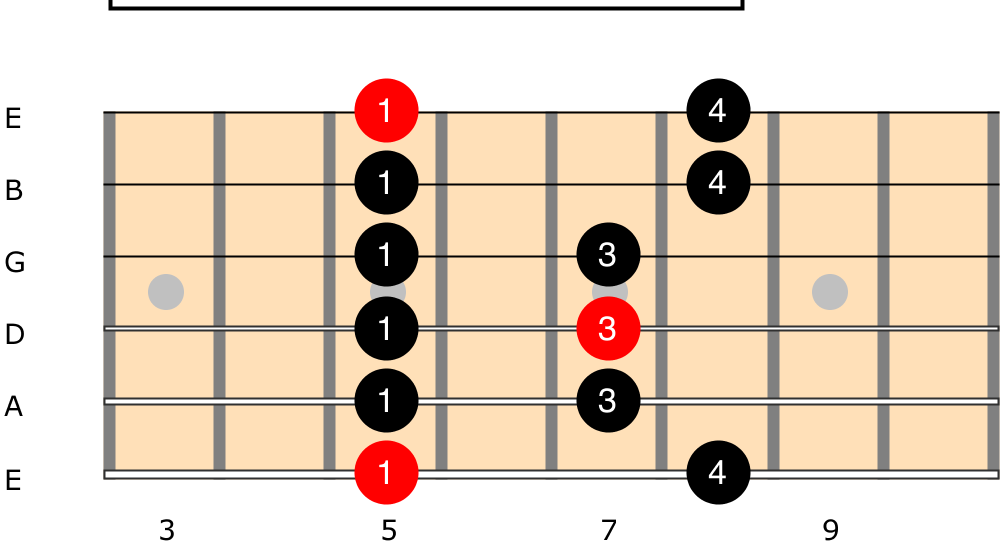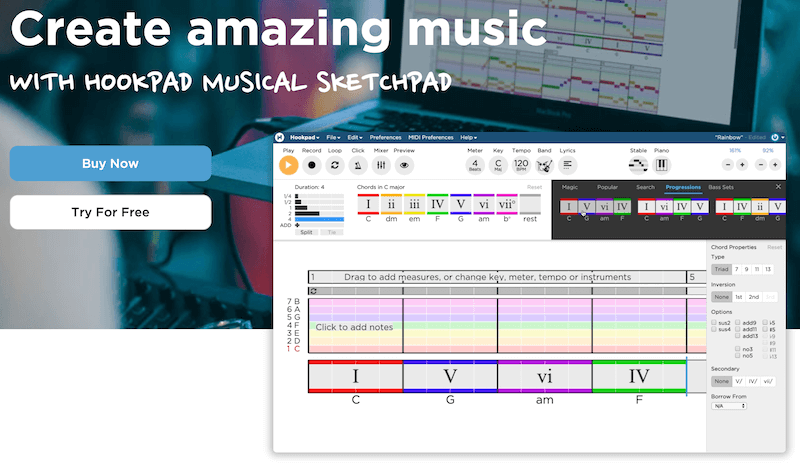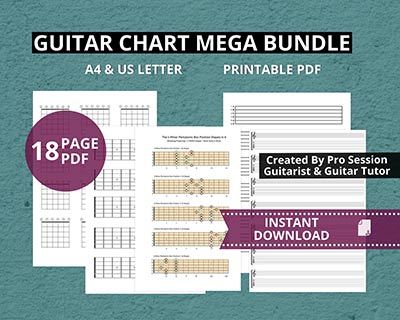This killer scale octave shape workout will help you learn the notes on the fretboard & make your fingers move faster (+ 3 x FREE practice backing tracks!)
Do you want to learn the fretboard notes in a snap? Then you need to check out this awesome minor pentatonic trick that will make it super easy for you. We’re not kidding when we say this is the best thing since sliced bread.
This trick is based on using octave shapes. By using these shapes, you can quickly find any note on the fretboard as long as you know the notes on the low E and A strings. Sounds simple, right?
Don’t worry if you feel a bit overwhelmed at first. Learning the fretboard notes takes time and patience, but it’s totally worth it. With this trick, you’ll be able to play faster, improvise better, and impress your friends.
So, let’s get cracking.
What are Octave Shape Exercises?
Octave shape exercises are one of the most powerful tools that guitarists have at their disposal. They can help you to learn the fretboard quickly and easily, improve your finger dexterity, and develop your improvisation skills.
So, what are they? Octave shapes are these versatile, movable patterns formed on your fretboard when you play two notes separated by an octave.
And here’s the beauty of it all – by mastering just a handful of these patterns, you’ll easily pinpoint any note on your fretboard.
I’ll explain; if you move an octave up from a root note, the new note is double the frequency of the starting note (see in Fig 1.0, the notes C1 – C2). If you move an octave down, the new note is half the frequency of the original note (C3 – C2).
C D E F G A B C D E F G A B C D E F G A B C E D F G…1 2 3 4
Fig 1.0 Distance between multiple C octave notes
Pssst...Play along at the end with the FREE backing tracks ⇩
Octave shape exercises are used frequently by jazz, funk, and rock guitarists. Some of the most famous octave shape players include Wes Montgomery, Dave Grohl, and John Petrucci.
If you want to improve your guitar-playing skills, octave shape exercises are a must!
Let’s get to the exercise.
Octave Shape Exercise Using the Minor Pentatonic Scale
In this exercise, you’ll be playing the notes in the A minor pentatonic scale using shape one (Fi.g 1.1), playing octave shapes to substitute single notes (Fi.g 1.2). Use your 1st finger on the bass note, and your 4th pinky finger on the higher note to give it a good workout.
Tools to use:
Metronome, timer, phone or tablet to record progress clips, notepad for practice notes, blank tablature paper to keep a log of any scale variations to add on.
Start off playing without a metronome and focus on memorising the octave positions and hitting them cleanly. Don’t stay in this comfort zone for longer than you need to – in other words, get that metronome on sooner rather than later.
Start on a slow tempo and gradually increase the speed; jot down the speeds on a practice planner or notepad as you go.


Practice Tips
After becoming comfortable with playing the exercise in the key of A, try practicing it in other keys such as B minor pentatonic and G minor pentatonic. These keys are illustrated in the tablatures shown below in Fig. 1.3 and Fig. 1.4.
If you don’t say the notes out loud, you’ll end up memorising the position only instead of the positions and the notes.
The goal of this exercise is to learn the notes on the fretboard, not just the positions of the octave shapes. By saying the notes out loud as you play, you are making yourself focus on the notes and their relationships with each other.
This will help you to learn the fretboard more thoroughly.
(This is called acoustic encoding and is a clever way to memorise newly learned information.)
Pro Tip
Make sure to use a metronome while playing. Begin slowly and increase speed gradually. Focus on clean transitions and memorising the notes.


5 Key Practice Variables To Change:
- Tempo: Start with a slow metronome and gradually increase speed while focusing on maintaining a steady rhythm. Speeds: Slow (60bpm approx), moderate (90bpm approx), fast (140bpm approx). Adjust the moderate and fast speeds according to your ability level.
- Duration: Use a timer and mix up the duration you play each exercise variation. For example, you can do 60 seconds of continuous repetitions or 2-minute repetitions.
- Number of reps: Vary the number of repetitions for each exercise, section, or key to avoid staying in your comfort zone.
- Rhythm: Experiment with playing different timing sub-divisions such as quarter notes, eighth notes, sixteenth notes & triplets.
- Music theory: Try saying the notes and intervals out loud as you play to turbo-boost your memory retention. Apply any other theory principles you’re learning as you play.
Free Practice Backing Tracks
Backing Track No. 1
This first backing track is a funky A minor vamp for you to practice the A minor pentatonic octave shapes over. The tempo is 100 bpm. (Hear examples of how to play the octave shape exercise in the 3rd backing track below).
Play along with the backing track and record yourself to check your timing and smoothness.
Depending on your playing ability, this could take a while to perfect. Come back and practice with the track daily for 5-10 minutes to see how you’re progressing.
Backing Track No. 2
This second backing track in the key of A minor features a vibey picking pattern over the Am, G5, Csus2/F and Em chords.
Practice the A minor pentatonic octave shape exercise shown in Fig. 1.2. The tempo is 100 bpm.
Follow the same exercise tips laid out for the first backing track – record yourself jamming with the track to critique your playing.
Backing Track No. 3
This third backing track features various rhythms and variations for playing the Am pentatonic octave shapes.
The octave shapes are initially played with a staccato style and then with slides. The last two examples demonstrate how altering the rhythm and timing can change the overall vibe of the music.









